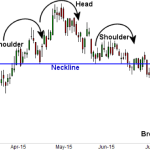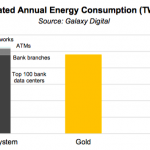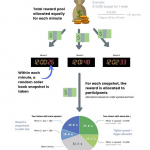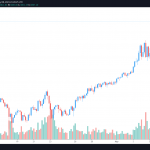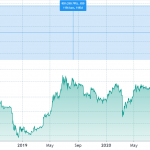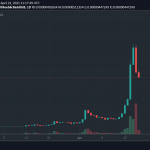In recent years, quantitative (quant) trading has gone from mysticism to being part of the everyday vocabulary of capital markets. The rapid proliferation of algorithmic trading together with trends such as machine learning has some experts thinking that every trading fund will eventually become a quant fund. Crypto was born in this golden era of quant financing and its digital and programmable nature makes it an ideal asset class for quant strategies. However, quant trading in crypto is both incredibly challenging and different from other asset trading.
Jesus Rodriguez is the CEO of IntoTheBlock, a market intelligence platform for crypto assets. He has held leadership roles at major technology companies and hedge funds. He is an active investor, speaker, author and guest lecturer at Columbia University in New York.
There are a number of relatively simple factors that make quant strategies for crypto assets unique. To put those factors in perspective, we can start by understanding the history of quant trading since its inception.
A brief history of quant finance
The roots of quantitative finance/trading can be traced back to mathematicians such as Louis Bachelier and his seminal work, “Theory of Speculation,” which outlined a model to price options under normal distributions. Bachelier’s ideas were mostly forgotten for over a century before being rediscovered by economists including Paul Samuelson and Robert Merton in their work in options pricing.
In the first half of the 20th century, most of the work around quant finance still lacked practical applications. This started to change in the 1950s when Harry Markowitz relied on computational finance methods to solve portfolio optimization problems, opening the doors to algorithmic trading across large numbers of securities. A remarkable figure in the history of quant finance has been the famous mathematician and hedge fund manager Edward Thorp, who adapted a lot of his work predicting and simulating blackjack card games to exploit pricing anomalies in securities markets. Very similar ideas to Thorp’s were formalized by economists Fischer Black and Myron Scholes when developing the Black–Scholes model, which was awarded the 1997 Nobel Prize in Economics. These ideas are still at the center of modern quant strategies, including those in crypto.
Read more: When DeFi Becomes Intelligent | Jesus Rodriguez
Despite its roots in academic research, the history of quant trading is tightly linked to technological developments in capital markets. From the transition from floor trading to electronic markets, the emergence of dark pools or the renaissance of movements such as machine learning, most pivotal moments have been enabled by technological breakthroughs.
The early 2000s became the golden era of quant trading, with billions of dollars flowing from traditional discretionary funds to quant alternatives. This is the universe into which crypto was born. Crypto represents not only a new asset class but a technological breakthrough in financial markets and, as a result, presented a new landscape for quant trading.
What makes quant for crypto different?
Despite the diversity in financial markets, the mechanics of quant strategies remain relatively similar across asset classes. It turns out that quant strategies that trade oil futures or traditional equities are incredibly similar in terms of datasets, techniques and infrastructure. Even more interesting, the technological evolutions in financial markets have benefited all asset classes fairly evenly. For instance, when dark pools were established, they were used by high frequency trading (HFT) funds to trade all sorts of financial instruments. From that perspective, quant trading technology has evolved at a very similar pace across all asset classes.
Crypto is the first asset class that combines new financial instruments with incremental technology improvements such as programmability or decentralization. There are several factors that make quant strategies in crypto unique, but most of them can be grouped into three fundamental categories: New Sources of Alpha, Programmable Financial Primitives and Unconventional Risk Models.
Alpha
The datasets used by quantitative strategies to discover alpha (the excess return of an investment relative to the return of a benchmark index) in different asset classes such as commodities, equities or currencies are remarkably similar. Spot or derivative order books, earnings reports and central bank reports are some of the common sources of alpha used in quant models in traditional capital markets. Crypto is the first asset class to introduce a new native source of alpha in the form of blockchain datasets.
Blockchain records are an incredibly rich source to extract intelligence related to the behavior of relevant parties in the crypto ecosystem such as exchanges, miners, large holders (whales), long-term holders and many others. From manual labeling to machine learning classification models, there are several strategies that help identify the entities associated with blockchain addresses. That information can enable strategies that detect trading signals based on the flow of capital in and out of the relevant addresses such as an exchange’s hot wallets that are accessible online. From that perspective, blockchain represents a new source of alpha that can spark new types of quant strategies specifically tailored to crypto assets.
Primitives
Quant strategies in traditional financial instruments focus on making predictions about the state of the market and executing actions based on those predictions. However, the infrastructure processing those actions relies on financial functions such as market making, lending or insurance that are controlled by obscure intermediaries outside the quant models themselves.
In crypto, decentralized finance (DeFi) introduces the idea of disintermediating those traditional financial primitives with smart contracts whose functionality is not only transparent but can be programmatically accessed by quant strategies. This simple idea adds a completely new vector to quant models in crypto, and DeFi specifically.
Read more: 6 Reasons DeFi Will Stay Inefficient (and Profitable) | Jesus Rodriguez
In addition to modeling predictions and executing trades, DeFi quant models interacting can interact with an underlying layer of financial primitives such as lending, staking, market making and many others. Also, the behavior of these financial primitives produces a footprint of on-chain data that can be incorporated as a unique source of intelligence in quant models. Replacing obscure intermediaries with transparent and programmable smart contracts introduces levels of automation and intelligence in DeFi quant strategies that have no equivalent in traditional capital markets.
Risk models
Almost since its inception, risk management is an essential component of quant strategies. Traditional risk management models in quant strategies evolve around price-related concepts such as volatility or hedging.
Crypto is a natively digital and programmable asset class, and that nature introduces different risk vectors that are foreign to traditional quant strategies. Events such as forks (a change in open-source software that requires users to upgrade to ensure everyone is running the same version of the code), liquidity attacks, smart contract hacks or new protocol launches, exchange listings represent relevant risk dimensions in crypto assets that should be factored in quant strategies. Although crypto still lacks a formal risk management theory that encompasses these new elements, most quant models express some individual awareness of them. As quant strategies in crypto evolve, so will their corresponding risk management models.
Perfect storm
The emergence of crypto coincided with a series of market and technological movements that makes it the perfect asset class for quant strategies. For starters, crypto was born in the golden era of quant trading in which quant asset managers are receiving a disproportional level of attention compared to discretionary alternatives.
Additionally, crypto coincided with the first mainstream wave of adoption in machine learning and deep learning technologies, which are driving a disproportional level of innovation in quant trading models.
Finally, the digital and programmable nature of crypto enables the emergence of new financial instruments such as DeFi, which represent a new playground for quant strategies.
Despite the confluence of positive factors, building quant strategies in crypto is different than in traditional capital markets. Unexplored sources of alpha, a new generation of financial primitives and unconventional risk models are some of the factors pushing the boundaries of quant trading in crypto.
Crypto might not have been designed for quant strategies but it could end up being the asset class that catalyzes a new wave of innovation in the quant space.


